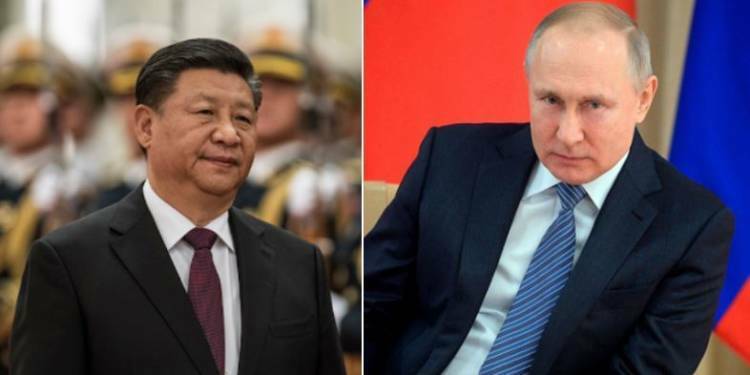China has made its ambitions very clear that it intends to build the “Polar Silk Road”. These developments came to the fore as China’s new five-year plan 2021-2025 was published on Friday. With a polar silk road, China could gain massive influence and foothold in a region that has an extensive Russian presence. A conflict is on the cards and Russia needs to respond.
China is planning to build the “Polar Silk Road” and is pressing for dominance in the Arctic and Antarctic regions in its latest 2021-2025 “five-year plan,” which was released on Friday.
Reuters reported that China plans to “participate in pragmatic cooperation in the North Pole,” according to the proposal, in order to “raise its capacity to participate in the defense and utilisation of the South Pole.”
China has been eyeing potential mineral resources in the Arctic region as temperatures rise and the threat of depletion of natural resources looms large. Minerals may become more accessible to humans as the region’s ice caps melt.
China published a White Paper in 2018 outlining plans to build new freight routes connecting Asia and Europe through the Arctic’s Northeast, Northwest, and Central Passages.
Furthermore, China, in 2020, has announced plans to launch a new satellite that will track shipping routes as well as monitor shifts in polar ice caps. The satellite will be launched in 2022.
The Transpolar Sea Route (TSR), also known as the Trans-Arctic Route, is an Arctic shipping route that passes across the Atlantic Ocean to the Pacific Ocean. With the melting of the ice caps, it is becoming more widely recognised as the next major shipping route in the coming decade.
With the extension of China’s ambitious Belt and Road initiative, the paper dragon claimed the Arctic as the “Polar Silk Road” linking Asia and Europe in the White Paper.
According to the White Paper, “China is an important stakeholder in Arctic affairs. Geographically, China is a Near-Arctic State, one of the continental States that are closest to the Arctic Circle.”
Recently, Russia successfully test-fired a hypersonic missile in the Arctic, sending a message to Xi Jinping to back off from the Arctic. And a nervous China seemed to have received the message. China’s State-owned media house Xinhua Net itself reported about Russia’s successful hypersonic missile test. According to Xinhua Net, the Russian Defence Ministry said that frigate Admiral Gorshkov in the White Sea fired a Tsirkon hypersonic cruise missile, hitting a naval target at a distance of 450 km in the Barents Sea.
The Kremlin envisages the Arctic as its “privileged sphere of influence.” Russian authorities strongly assert the primacy of eight Arctic countries in the region. Moscow is not very keen on non-Arctic powers, such as China, playing a dominant role in this part of the world.
China is practically the only threat that Moscow faces in the Arctic. And Russian President Vladimir Putin’s patience is seemingly wearing thin, given the rate at which polar ice caps in the Arctic are melting. Global warming is opening up the Arctic to trade, commerce and military activities. Russia’s Northern Sea Route (NSR) through the Arctic is expected to carry freight in excess of 32 million tons in the ongoing year.
China has also often raised the issue of Vladivostok with Russia, as it is of importance to China. But China’s expansionism in that area is not going to stop there as China plans to flex its muscles across the arctic.
Thus, China’s ambitions to build a “polar silk road” would massively intrude in the Russian sphere of influence and Putin needs to respond to this intrusion as soon as possible sending a message of deterrence to the paper dragon.
